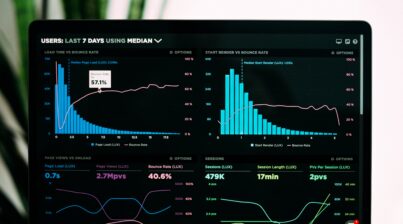Want to play a key role at the leadership table? As an HR professional you must understand and leverage people analytics to help leadership analyze data to solve your organization’s challenges. You can gather your workforce’s people data from your HR software, employee engagement surveys, and exit interviews, to name a few sources. With the insights from your people analytics you can drive organizational change.
Now is the time to stop making organizational decisions based simply on your instinct, years of experience, and intuition. People analytics will allow you to provide meaningful insights to department managers and executive leadership, unlocking the power of data. Why is that so important? People analytics increases accuracy in reporting, improves performance, and reduces bias in decision-making. How? Let’s start by defining people analytics.
What Is People Analytics?
People analytics is the use of data and analytical techniques to understand and manage your organization’s workforce. It is a relatively new field that has emerged with the growth of digital data and advances in analytical methods. People analytics is typically multidisciplinary, drawing on methods and insights from fields such as psychology, sociology, human resources, and data science.
The goal of people analytics is to use data and analysis to drive better decision-making. Not to mention improve the overall performance of an organization. It’s critical that you set up HR metrics and KPIs that matter. Some of the ways your HR team can use people analytics include:
- Recruiting: Using data to better understand the characteristics of successful employees, and to improve the effectiveness of recruiting efforts.
- Performance management: Analyzing data on employee performance to identify areas for improvement and to make more accurate performance evaluations.
- Employee engagement: Measuring employee engagement and using data to identify factors that contribute to high levels of engagement.
- Diversity, equity, and inclusion (DEI): Using data to better understand and address disparities and issues related to DEI within your organization.
- Talent management: Analyzing data on employee development and progression to identify high-potential employees and to improve talent management processes.
How Can HR Professionals Get Started?
There are several steps that HR professionals can take to get started using people analytics:
- Define your goals: Clearly define what you want to achieve through the use of people analytics. This will help you to identify the data and analyses that you need to collect and perform.
- Collect and organize your data: Identify the data that you need to collect and organize it in a way that makes it easy to analyze. This may include data on employee demographics, job performance, engagement, and turnover, among other things.
- Choose the right tools: There are many different tools available for performing people analytics, such as spreadsheet software, data visualization tools, and machine learning platforms. Here’s the exciting thing – you no longer need to manually pull information from spreadsheets and disparate systems. Employee Cycle’s HR analytics dashboard does all the work for you!
- Build your analytical skills: People analytics requires analytical skills and knowledge of statistical methods, so it’s a good idea to build your skills in these areas. You can do this by taking online courses, attending workshops or even hiring an data analyst to help you. Or, you can work with an Employee Cycle data coach who will help you fully leverage your people analytics.
- Start small: Once you have your goals, data, tools and analytical skills, start with small projects that you can complete in a short amount of time. This will help you to get a feel for what is possible with people analytics and help you identify areas where you can improve.
- Communicate results effectively: People analytics will provide insights that can guide decision-making. Communicate your findings to your leadership, peers, and other stakeholders in a way that is clear, actionable and easy to understand. Employee Cycle’s decision-centered reporting and analytics makes it easy for you to build reports that are clear and understandable.
- Continuously improve: Continuously monitor and analyze your data, track your progress and be open to change. Use the insights you gain to make improvements and make informed decisions.
It’s also important to note that people analytics is not just a one-time project but rather a continuous process. Building an analytics culture within your company with measurable objectives, regular data collection, and review can help it to become an integral part your company’s decision-making.

What Are The Benefits Of Using People Analytics For Decision-Making?
There are several benefits of using people analytics for decision-making in your organization, including:
- Improved decision-making: People analytics can help your organization make more informed decisions by providing data-driven insights. This can lead to better decision-making around recruiting, performance management, employee engagement, and other areas.
- Increased efficiency: By using data to identify patterns and trends, your organization can make more efficient use of resources and target your efforts more effectively.
- Greater transparency: People analytics can provide greater transparency into your organization’s processes and can help identify areas where there may be disparities or inequities. This can help your organization to be more inclusive and to address issues related to diversity, equity, and inclusion.
- Better talent management: People analytics can help your organization identify high-potential employees and to improve the way they manage talent. This can lead to a more engaged and productive workforce.
- Increased employee engagement: By using data to identify the factors that contribute to employee engagement, your organization can take steps to improve engagement and create a more positive work environment.
- Cost savings: People analytics can help your organization to reduce costs by identifying areas where you can be more efficient and by reducing turnover and other costs associated with employee churn.
- Better HR forecast: Data-driven insights can be used by HR to predict workforce trends and potential issues. This allows the company to proactively plan and make decisions on how to handle future workforce needs.
It’s important to note, however, that people analytics is not a silver bullet, and it’s not going to solve every organizational problem. And there are different directions that each HR team should take moving forward. But by giving decision makers access to data and insights, it can be a powerful tool for improving organizational performance and creating a more positive work environment.
Putting The Pieces Together
We’ve covered a lot and this may seem overwhelming. So can be the job of an HR professional who doesn’t have a one-stop-shop to look at the analytics of their organization. That’s why we recommend an intelligent and sophisticated HR analytics dashboard that works for you.
Still not convinced or maybe you need to see all the pieces together, working seamlessly? We’re here to help! Employee Cycle’s platform transforms people analytics into a user-friendly, centralized, and real-time dashboard. Our dashboard helps you avoid risks, save costs, and increase your employee lifetime value by combining data from disparate systems into one repository that works for you.
Want to learn more? Schedule a demo today! We are more than happy to help you tackle your seemingly endless platforms and create a single source of analytics tailored to your business needs so that you can make successful, data-driven business decisions.












